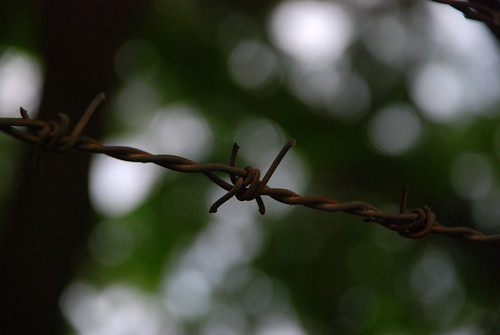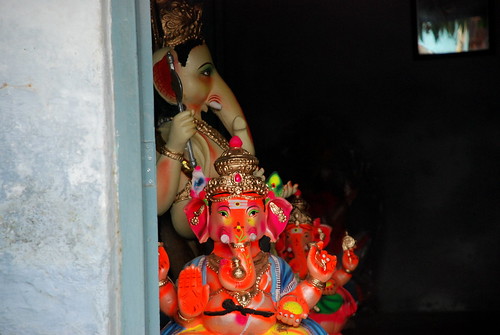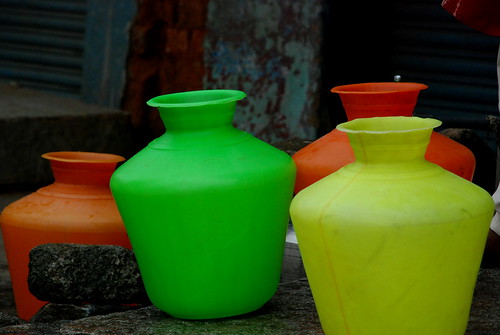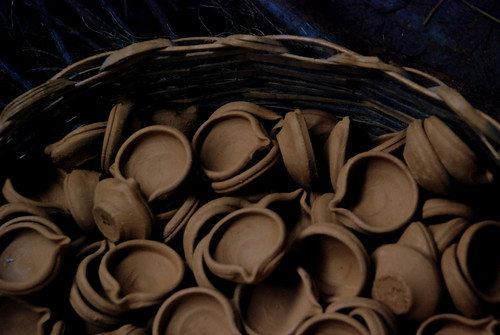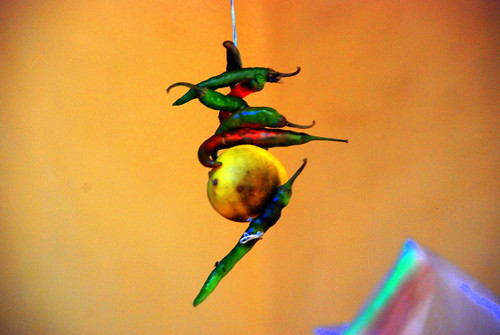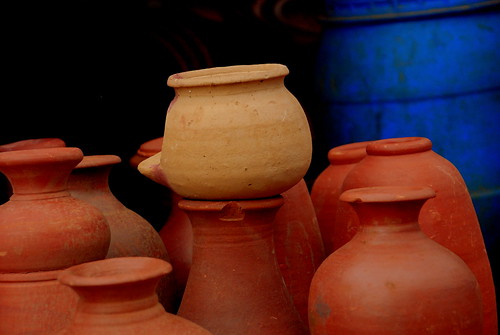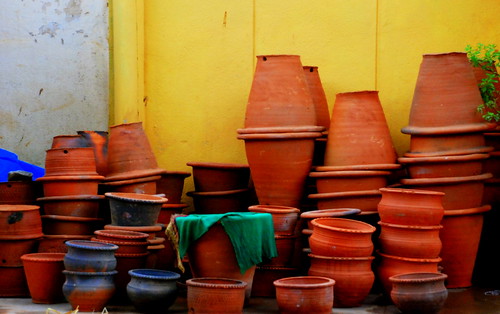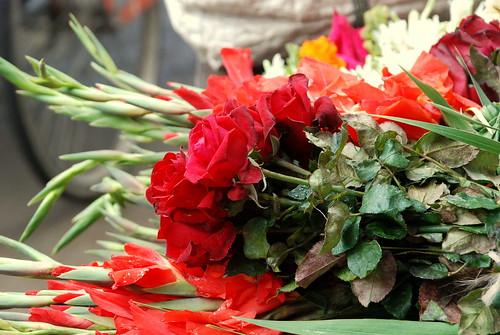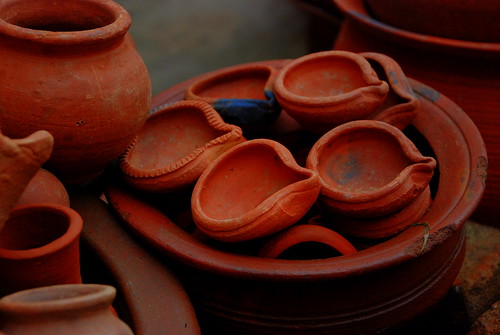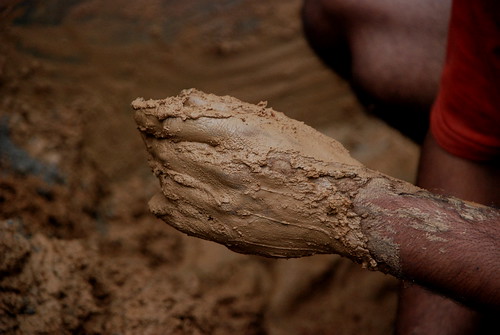Worldwide Photo Walk...
Last Saturday morning, offered a perfect weather for going out and capturing few moments of Bangalore city through the camera clicks. I along with few other shutterbugs made full use of this opportunity as we participated in the Bangalore leg of the Worldwide Photo Walk. The Photo Walk was held to mark the release of 'Lightroom', a photography software programme developed by Adobe. Bangalore was the only city in India where this was talking place, apart from the other 192 cities across the world.
This Bangalore leg of the event was managed by Mahesh Shantaram, an independent documentary photographer and artist based in Bangalore.

There was no planned agenda for the walk and it was quite informal. We all started the event at around 7:30 A.M. from Mayo Hall, one of the prominent landmarks in Bangalore. Then our steps clip-clopped on the Residency Road. On our journey we were free to capture anything and everything in our camera lenses.

I was in a mood to make some bio-scopic compositions, even though I was walking down a road heavily masked with glitz shopping malls. Bangalore's old memories are fading very fast, both in the physical environment and in the social atmosphere. That's a logical outcome of economic growth, so better capture those in pictures before they are reduced to dust.

Just a decade ago, anyone could walk down the narrow alleyways and sip a cup of coffee or tea for one rupee or so. But today rusted locks adorn the entrance doors of these neighborhood tea/coffee houses. The once sleepy get together place has given way to a cosmopolitan shopping juggernaut.

Something definitely is lost, for few it's for the better while for the rest, it's for the worse. The city's populace is no longer nostalgic about the remnants and with an urge to modernize fast, the Government and the builders have gutted the city's very soul.
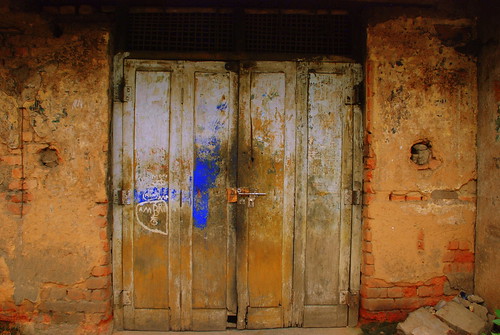
Bangalore and traffic jams are synonymous. Just that the intensity of the blockage varies with the time period of the day. Even though the day had just started, there were long queues of two-wheelers parked near the road.
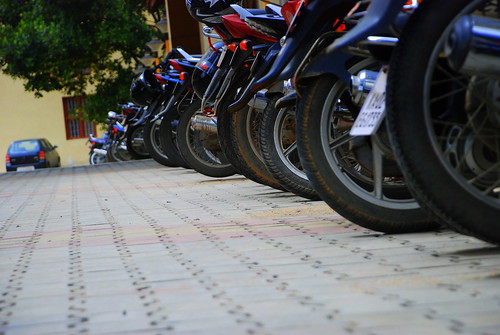
Construction sites are a common sight but what really adheres to one's vision is the vibrant life visible on the streets. Like this one, a cobbler mending and polishing shoes, sitting on a tiled pathway by the side of the road, enjoying the cacophony of the traffic in front of him.
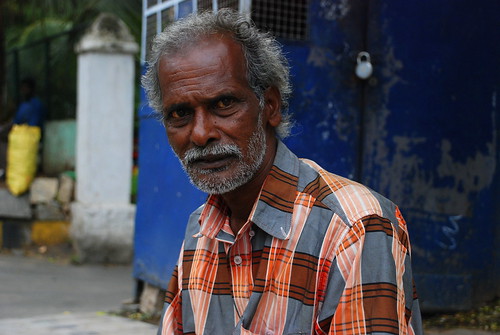
Today the city that is bursting at the seams is home to people from so many different strata of life, each seemingly a different world of its own. Some enjoy food in the elegant and refined restaurants that have mushroomed in the cities and some are happy with the food that a make-shift stall owner provides.
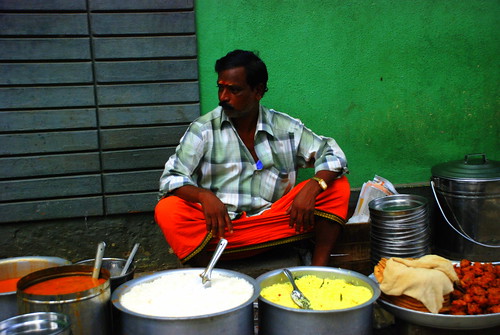
Who cares as long as its food?

This way the walk continued and many eyes in the traffic were settled on me and few of my fellow shutterbugs. Since there were few foreigners in our group, the autowallas thought that we were tourists, exploring the city over the weekend and approached us with invites to take us on a paid tour of the city. It was around 11 A.M. that we finally decided to put an end to the walk. All of us gathered in the Mocha restaurant where many had late breakfast amidst passionate discussions about the snaps that each had taken.

All in all a refreshing way to spend four hours of a weekend, walking down the narrow streets and capturing life in pictures. By the way, were these snaps, Ok?
You can check the photos taken by all the participants in the event here.
Keep reading and remain connected.
Labels: attitude, blogs, city-life, colors, photo contest, Photography, Worldwide Photo Walk
